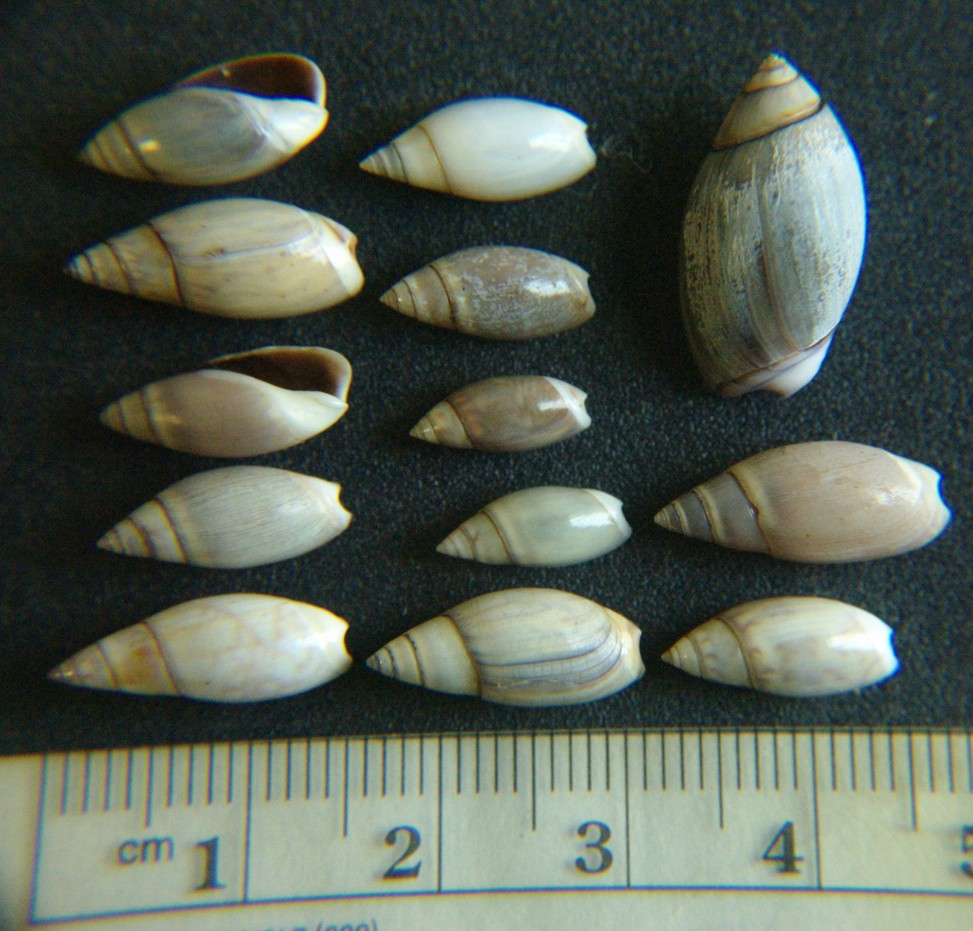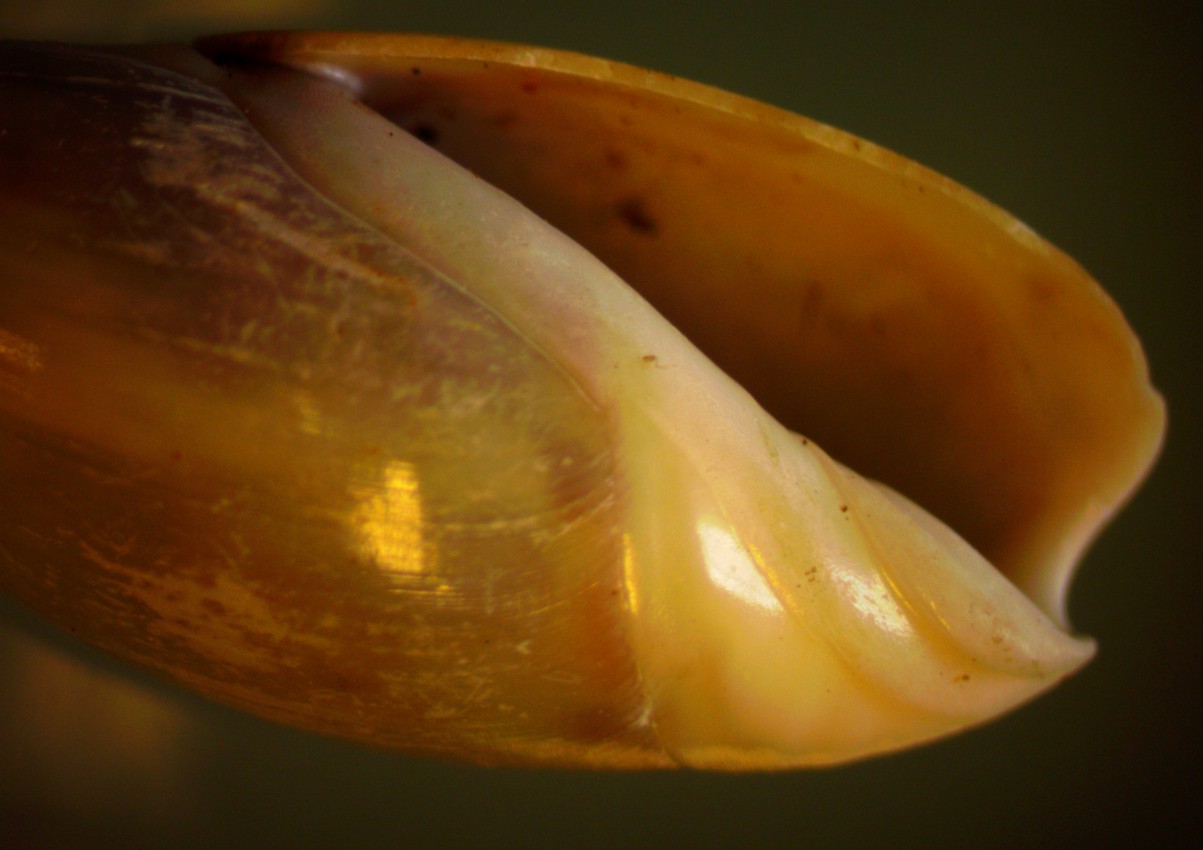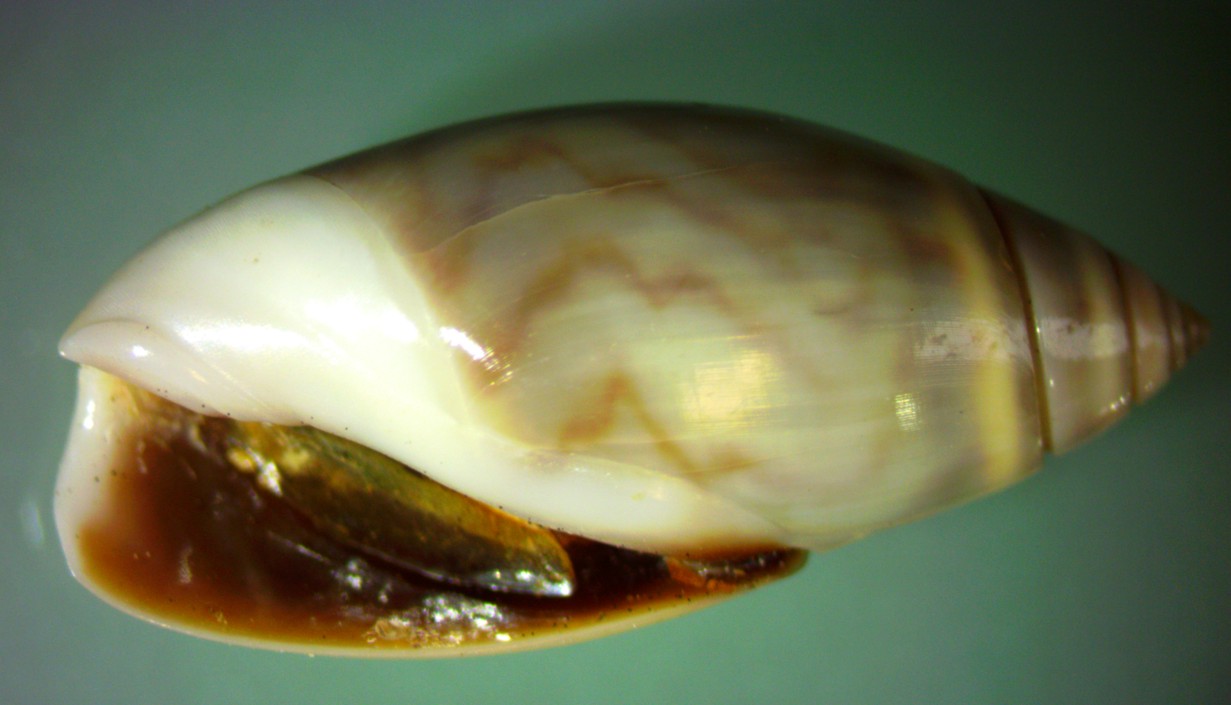Callianax baetica (Carpenter, 1864)Common name(s): Baetic olive, baetic olive snail, baetic dwarf olive, brown olive, little olive, San Pedro rice shell |
|
| Synonyms:Olivella baetica, O. boetica, O. diegensis, O. intorta, O. mexicana, O. pedrona, O. porteri | |
|
Phylum Mollusca
Class Gastropoda
Order Neogastropoda
Suborder Rachiglossa
|
|
| Callianax baetica shells, about 11-13 cm long, from southern California. Walla Walla University collection, undated. The Kozloff (1996) key would identify the specimen on the right as C. pycna because of its wavy brown lines, but the descriptions and ranges in Carlton (2007) and Lamb and Hanby (2005) suggest it is probably just another variant of C. baetica. | |
| (Photo by: Dave Cowles, 2014) | |
Description: Olive shells have a long, narrow aperture and short, raised spire . The outside of the shell is smooth and polished because the animal's mantle typically covers the outside of the shell. The anterior end of the aperture has a small siphonal notch , but it has no anal notch. Callianax baetica is a small olive (up to 2 or max 2.7 mm long), slender, gray-brown to tan, often with brown longitudinal color lines. May have faint purplish brown spots (maculations) near the suture.
How to Distinguish from Similar Species:Callianax biplicata is much larger, less slender, and much more common in our area; plus it often has some violet color near the base (photo). C. pycna is small like this species but is much more robust (less slender) and frequently has wavy brown longitudinal lines (though it appears this species may have wavy brown longitudinal lines as well (see photo above). C. pycna is almost always offshore.
Geographical Range: Northern Alaska to northern Mexico
Depth Range: Intertidal to 60 m
Habitat: Soft bottoms with mud or silt. Often buries in substrate.
Biology/Natural History:
May be
intertidal but is most commonly found offshore. Is much less
commonly
found in the Pacific Northwest than is C.
biplicata.
| Return to: | |||
| Main Page | Alphabetic Index | Systematic Index | Glossary |
References:
Dichotomous Keys:Carlton, 2007
Kozloff, 1987, 1996 (as Olivella baetica)
General References:
Lamb and Hanby, 2005
Scientific Articles:
Web sites:
General Notes and Observations: Locations, abundances, unusual behaviors:
All photos on this page were taken of snails collected from southern California (Santa Barbara and south) in an undated Walla Walla University collection.

This assemblage of Callianax baetica specimens shows the size and some of the variation in markings. The larger individual at the top right is Callianax biplicata for comparison.
This closeup shows the features of the aperture and the folds on the columella.
The aperture
on this individual clearly shows the operculum.
The wavy brown longitudinal lines on the shell would cause this
individual
to be identified as Olivella
(Callianax) pycna
in Kozloff's key.
Authors and Editors of Page:
Dave Cowles (2014): Created original page
CSS coding for page developed by Jonathan Cowles (2007)
Salish Sea Invertebrates web site provided courtesy of Walla
Walla University

